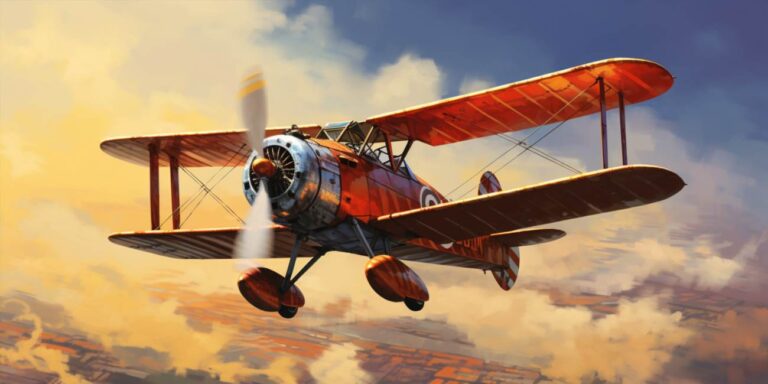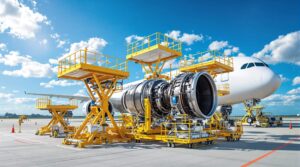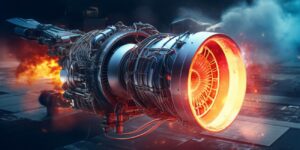Primarily, aircraft were employed for reconnaissance. The bird’s-eye view provided by planes allowed military commanders to gather critical intelligence on enemy positions, troop movements, and fortifications. This newfound ability to survey the battlefield from above enhanced strategic planning and decision-making.
As the conflict progressed, the role of aircraft expanded beyond reconnaissance to include aerial combat. Pilots engaged in thrilling dogfights high above the trenches, maneuvering their biplanes to gain a tactical advantage. The introduction of fighter planes, such as the famous Sopwith Camel and the Fokker Dr.I, showcased the evolving capabilities of aircraft in direct combat.
Moreover, aircraft were adapted for bombing raids. Bombers, often biplanes modified to carry explosive payloads, targeted enemy infrastructure and supply lines. The indiscriminate destruction caused by aerial bombings brought a new dimension to warfare, affecting not only military targets but also civilian populations.
The emergence of the aircraft as a weapon of war also influenced naval operations. Naval aviation became a critical component, with aircraft carriers and seaplanes playing vital roles in maritime reconnaissance and anti-submarine warfare.
The advancements in aviation technology during World War I laid the foundation for future aerial warfare. The war demonstrated the feasibility and effectiveness of aircraft in various military capacities, shaping the trajectory of military aviation in the years to come.
Fighters and bombers aircraft in world war one
World War I marked a transformative period in military aviation, with the introduction of fighters and bombers playing pivotal roles in shaping the course of the conflict. The era witnessed a rapid evolution in aircraft design and tactics, as nations scrambled to gain aerial superiority.
One of the iconic fighters of World War I was the Sopwith Camel, a British single-seat biplane. Known for its agility and powerful twin Vickers machine guns, the Camel became synonymous with Allied air dominance. On the German side, the Fokker Dr.I gained notoriety due to its association with the legendary Red Baron, Manfred von Richthofen. These nimble fighters engaged in intense dogfights, showcasing the dawn of aerial combat.
While fighters focused on air-to-air combat, bombers emerged as a strategic tool for disrupting enemy infrastructure and morale. The Gotha G.IV, a German twin-engine bomber, was a menacing presence in the skies. It conducted daring nighttime raids over London, ushering in a new era of strategic bombing. On the Allied side, the Handley Page O/100 proved influential, demonstrating the potential of heavy bombers in long-range missions.
Amidst the aerial duels and bombing campaigns, technology played a crucial role. The synchronization gear, pioneered by the French with the Nieuport 11, allowed fighters to fire machine guns through their propellers without damaging them. This innovation enhanced the lethality of aerial combat, shaping the future of aviation warfare.
The introduction of fighters and bombers also spurred the development of air tactics. The dogfight, a term coined during this period, became synonymous with close-quarters aerial combat. Bombing raids evolved from sporadic attacks to systematic campaigns, targeting key military and civilian infrastructure.
As the war progressed, the skies became a dynamic theater of operations. Aces like Eddie Rickenbacker and the aforementioned Red Baron achieved legendary status, their exploits adding a human dimension to the technological advancements. The rivalry between fighters and the constant threat of bombers reshaped military strategies, laying the foundation for future air warfare doctrines.
Transport and medical aircraft in ww1
In the tumultuous era of World War I, transport and medical aviation played pivotal roles, reshaping the battlefield landscape and challenging traditional notions of warfare. As the conflict unfolded, the need for rapid evacuation and medical support became increasingly apparent.
Transport aircraft, a relatively novel concept at the time, emerged as game-changers on the front lines. The introduction of aircraft for transport purposes allowed for the swift movement of troops, supplies, and crucially, the wounded. These flying machines, often repurposed from civilian models, became lifelines connecting the heart of the conflict to the rear.
One of the notable aircraft types that played a key role in transport during World War I was the de Havilland DH.4. This sturdy biplane, initially designed as a bomber, underwent modifications to serve as a medical evacuation aircraft. Its versatility allowed it to transport both medical personnel and injured soldiers, swiftly bridging the gap between the front lines and field hospitals.
Medical aviation, born out of necessity, evolved to become a critical component of wartime healthcare. The idea of aerial evacuation was groundbreaking, enabling the rapid transport of wounded soldiers from the battlefield to advanced medical facilities. The concept of “flying ambulances” materialized with aircraft like the Farman MF.11, which was adapted for medical purposes.
The demands of evacuation led to the establishment of dedicated air ambulances, transforming the skies into a lifeline for the wounded. These aircraft were equipped with rudimentary medical facilities, allowing for basic medical care during transit. The medical crews on board became unsung heroes, providing essential aid to those in need while navigating the challenges of flight.
As the war progressed, collaboration between ground-based medical teams and airborne evacuation units became more streamlined. The introduction of dedicated medical units within the air forces marked a paradigm shift in military healthcare, emphasizing the importance of rapid evacuation for improving survival rates among the injured.
In the grand theater of war, the integration of transport and medical aviation reshaped military strategies. The ability to swiftly move personnel and provide timely evacuation for the wounded not only saved lives but also influenced future doctrines on the utilization of air power in conflicts.
| Aircraft Type | Role |
|---|---|
| de Havilland DH.4 | Transport and Medical Evacuation |
| Farman MF.11 | Medical Evacuation |
Other roles of planes in the first world war
Amidst the roaring engines and whizzing bullets of the First World War, planes emerged not only as instruments of destruction but also played crucial roles in training, communications, and experiments, expanding their significance beyond the battlegrounds.
While the primary purpose of planes was aerial combat, they soon found a new role as essential tools for pilot training. Pilots-to-be needed to hone their skills in navigating the skies, mastering intricate maneuvers, and understanding the complexities of their machines. This marked the birth of dedicated training squadrons, where novices transformed into skilled aviators, crucial for sustaining air superiority.
Beyond the training grounds, planes became the messengers of the skies, revolutionizing communications on the battlefield. In an era dominated by trench warfare, ground-based communication faced insurmountable challenges. Enter the aerial courier – planes equipped with radios and signaling devices. These airborne couriers facilitated swift transmission of orders and intelligence, bypassing the obstacles that plagued traditional communication methods.
The Great War was also an era of technological curiosity, prompting daring experiments in the sky. Planes were not confined to combat roles; they became floating laboratories for testing new technologies. From experimenting with early iterations of radar to evaluating the feasibility of airborne reconnaissance, the skies transformed into a realm of innovation. These experiments laid the foundation for future advancements in aviation technology.
One remarkable facet of planes during the First World War was their adaptability. They seamlessly transitioned from instruments of war to platforms for skill development, facilitators of effective communications, and arenas for daring experiments. As the conflict unfolded, the significance of planes transcended their original purpose, leaving an indelible mark on the evolution of aviation.






